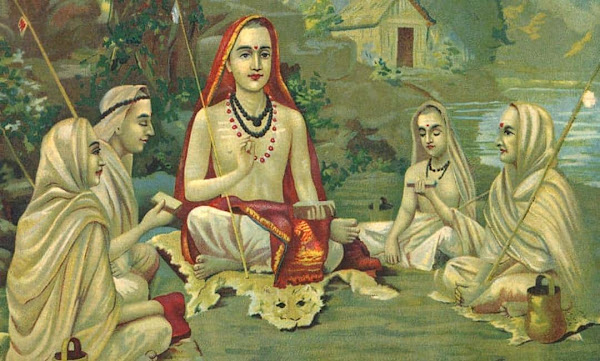Bhimana Amavasya or Jyotirbheemeshwara Vrata: A Festival of Faith and Fire
A Festival of Faith and Fire
Bhimana Amavasya, also known as Jyotirbheemeshwara Vrata, is a significant festival celebrated predominantly in Karnataka, Andhra Pradesh, and parts of Maharashtra and Tamil Nadu. Falling on the Amavasya (New Moon) last day of the Ashadha month, it marks a powerful observance dedicated to Lord Shiva in his Rudra-Bheema form, symbolizing strength, purification, and spiritual radiance.
It is believed that on this sacred day, Goddess Parvati performed rigorous penance to attain Lord Shiva as her consort, and devotees—especially women—observe fasts and perform rituals to seek blessings for a righteous life partner, protection, and inner strength.Why Is Rudra-Bheema Worshipped as Jyoti (Light)?
The form of Shiva worshipped during this vrata is Rudra-Bheema, an intense, resplendent manifestation of Shiva as the cosmic fire—a form that radiates fierce energy and yet offers divine protection. The name Jyotirbheemeshwara combines:
-
Jyoti – light, illumination, divine fire
-
Bheema – mighty, formidable, awe-inspiring
-
Ishwara – Lord, Supreme Being
Symbolism of Light in Rudra-Bheema Form
-
Spiritual Awakening:
The Jyoti represents jnana-agni (the fire of knowledge). Rudra-Bheema is worshipped as the remover of ignorance and darkness. He is invoked to ignite the inner flame that burns karmic impurities and leads to liberation (moksha). -
Protective Force:
Bheema, in this form, is not just fierce but also a guardian deity. His fire is symbolic of the protective aura (tejas) that shields the devotee from negative forces, internal and external. -
Parvati's Tapasya:
The legend goes that Parvati lit a sacred jyoti and meditated on Rudra, asking for him as her consort. Her intense devotion invoked Shiva in his fiery Rudra-Bheema form, who appeared as a radiant flame, hence the name
The Role of Panchagni – The Five Sacred Fires
The concept of Panchagni (five fires) has deep roots in Vedic and Upanishadic wisdom, particularly associated with tapas (austerity) and purification.
In the context of Jyotirbheemeshwara Vrata
1. External and Internal Purification:
The devotee is encouraged to undergo self-purification through symbolic association with the five fires:
-
Surya (Sun) – outer consciousness
-
Agni (Domestic fire) – ritual and discipline
-
Lightning/Heavenly Fire – divine intervention
-
Earthly Fire (Homa) – offering and surrender
-
Stomach Fire (Jatharagni) – digestion and transformation
Just as Parvati sat amidst five literal fires in her penance, the devotee also engages in spiritual fire by:
-
Fasting (discipline over body)
-
Chanting (discipline over speech)
-
Silence (discipline over mind)
-
Light offering (connecting to Jyoti within)
-
Surrender (burning ego in the fire of bhakti)
2. Metaphor for Mind-Body Transformation:
Panchagni is also symbolic of transforming the five elements—earth, water, fire, air, and ether—within the human system. As the devotee observes the vrata, these tattvas are aligned and purified through intention, offering, and meditation.
Rituals and Observance
-
Lighting of Deepas (Lamps)
Devotees light five or more oil lamps as a symbolic panchagni, representing the divine light of Rudra. -
Offering to Shiva-Linga
A special Shiva Linga (often made of rice flour or mud) is worshipped as Jyotirbheemeshwara, decorated with flowers and turmeric-kumkum. -
Narration of Vrata Katha (Sacred Story)
The story of Parvati’s penance and Lord Shiva’s appearance as Jyoti is narrated, emphasizing the power of sincerity, patience, and divine love. -
Fasting and Meditation
Devotees observe a strict fast and spend the day in prayers and mantras like Om Namah Shivaya and Rudram chanting, connecting to the inner jyoti.
Spiritual Relevance for Today
In an age of distractions and emotional volatility, Jyotirbheemeshwara Vrata teaches:
-
The strength in stillness (like Parvati’s tapas)
-
The power of inner light to dispel darkness
-
The necessity of purification through ritual and reflection
-
The sacred union of Shiva and Shakti within each being
It is especially empowering for women, helping them align with the feminine divine strength (Shakti), and for men, it is a day to cultivate integrity, clarity, and inner fire.
Shri Ram is an example
Conclusion: The Festival of Fire and Devotion
Bhimana Amavasya is not just a festival but a spiritual purification ritual disguised as a celebration. Worshipping Rudra-Bheema as Jyoti and aligning oneself with the panchagni principles is an invitation to burn away tamas (inertia), rajas (ego-driven activity), and awaken sattva (purity, balance).
Let this Amavasya not be a night of darkness, but the dawn of the inner jyoti that leads us toward Shiva—our true self.
Dr.Asha







Comments
Post a Comment